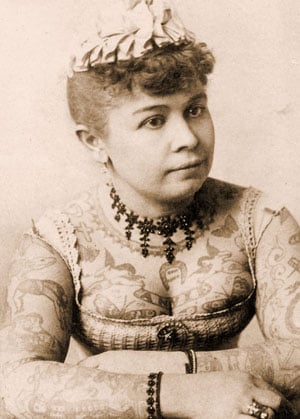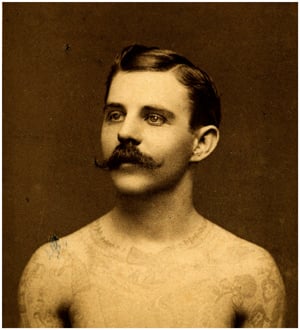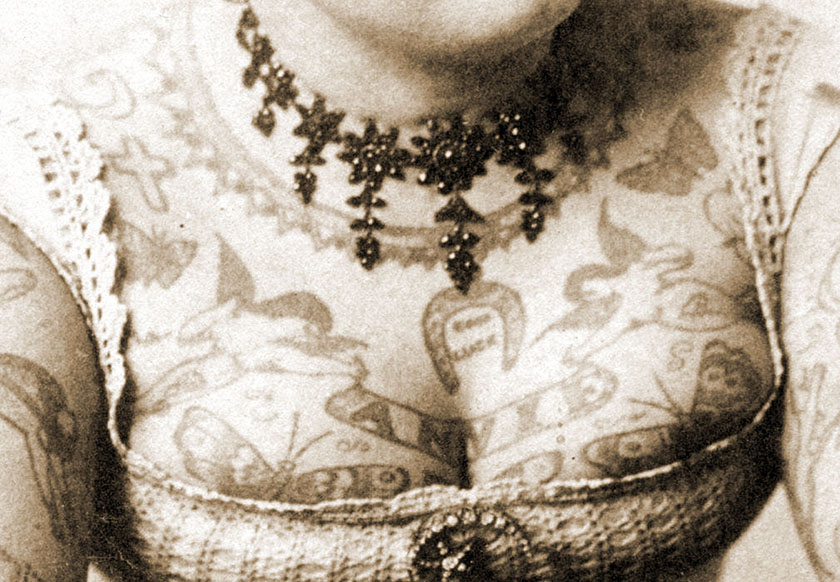
Top Ten Tats: A History of Body-Art
Here is a run down of badass tattoo images, featuring a disproportionate amount of hunky sailors and bare butts.
In broadly chronological order:
Lived during the 5th century BC, and was buried with horses, meat, yogurt and a massive headdress. She has a supercool stag-like tattoo on her shoulder. I also love this image because they’ve preserved the modesty of this ancient inked Altai mummy princess with an artfully placed, virginal polyester veil. It’s hilariously prudish – the busted skull is fine, but no withered boobies, thank you very much – and weirdly eroticised at the same time.
The magic and the most powerful effect of women is, in philosophical language, action at a distance, actio in distans: but this requires first of all and above all – distance ~ Friedrich Nietzsche, ‘The Gay Science’
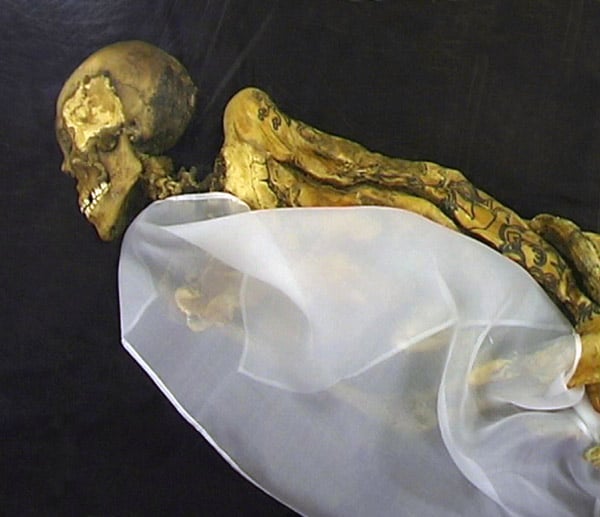
Princess Ukok or Princess of the Altai, a mummy that was found in 1993 in a kurgan in the remote Ukok Plateau in the Altai Republic (photo) / Republican National Museum, Gorno-Altaisk, Russia / Pictures from History / Bridgeman Images
This dubious 16th century rendering of a Pictish woman represents my tattoo goals. I dig the Renaissance imagining of pagan symbology, which looks pretty much nothing like any record of Pictish visual culture we’ve retained. It’s blue though, which might be accurate – but if so, it would have been warpaint rather than permanent body modification. Experiments with woad as a tattoo pigment in modern times have resulted in caustic burns.
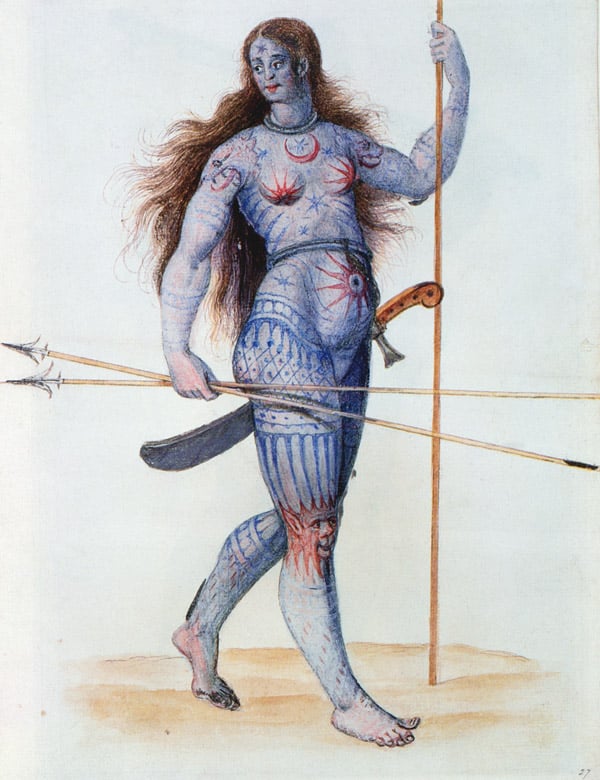
Pictish Woman (lithograph), White, John (fl.1570-93) (after) / Private Collection / Bridgeman Images
This is a Maori tattoo needle from the 18th century, but the practice hadn’t changed since New Zealand was settled in around the 13th century. It’s actually not strictly a tattoo needle, because it carves the skin and basically rubs ink into the wound, forming a pigmented, grooved scarification. It works by lightly holding the handle and repeatedly hammering the chisel head into the skin with a separate implement. It takes forever and there’s loads of blood. This one is made of human bone.
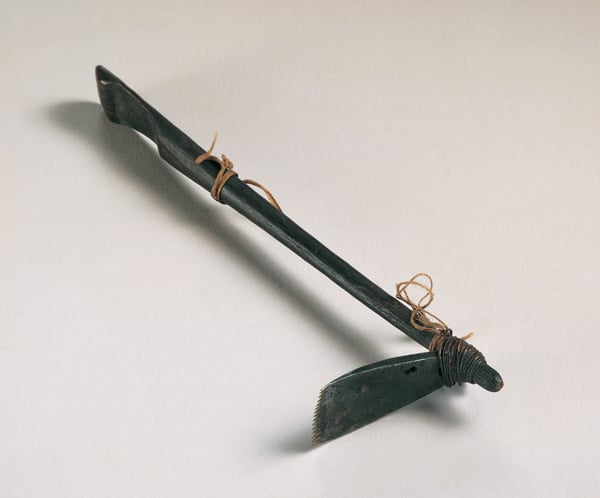
Uhi, tattoo needle, Society Islands, 18th century (wood, human bone, coconut fibre sennit), Polynesian School, (18th century) / Mark and Carolyn Blackburn Collection of Polynesian Art / Bridgeman Images
This young man receiving a traditional Thai tattoo has the sweats and looks like he’s about to pass out. The technique here is a hand-poke method, without the hammer and chisel seen above. Instead, the artist steadies the point of a long needle with one hand and jabs it into the skin with the other; this way is far less bloody and more similar to the modern tattoo gun, in that the needle places the ink between the dermis and the epidermis, without fully puncturing the skin. Still hurts a lot though.
It goes from the waist down to the knees and takes *weeks*. The hip area is especially painful because it’s so close to the bone.
Let’s address the ‘tribal’ tattoo. Left is an actual Easter Island tribal tattoo, a tradition dating from settlement between the 8th and 12th centuries. It has an awesome turtle. Right is some white guy with a tramp stamp.
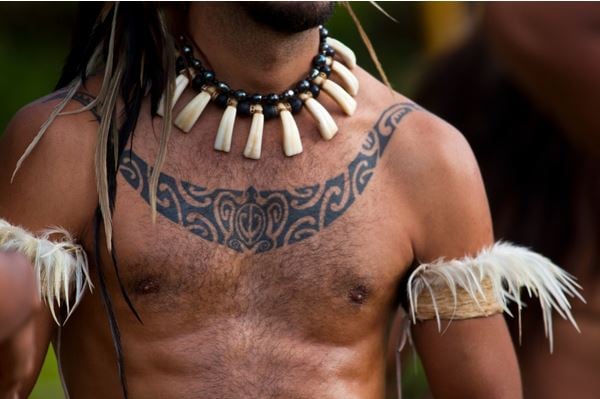
A Easter Islander, tattooed and in traditional dress (photo) / Michael Melford/National Geographic Creative / Bridgeman Images
Frank and Annie Howard, tattoo power couple, exhibited as part of Barnum & Bailey’s circus in the late 1800s and early 1900s, and they had a daughter who became a snake charmer at the age of eight.
This gentleman gets a special award for most upright moustache. Let’s not judge him by contemporary hipster standards. He also has a lot of really fun animals.
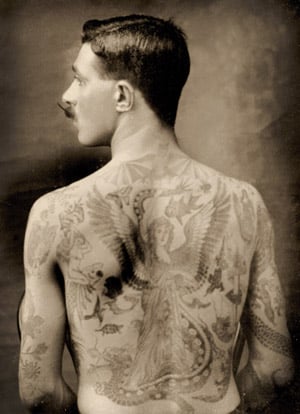
Tattooed British sailor during the Great War of 1914-18 (back view) (b/w photo) (see also 473188) / Private Collection / Prismatic Pictures / Bridgeman Images
2. Doc Forbes, Canadian tattoo pioneer
Here with beautiful American Traditional style eagle and unsettlingly young sailor.
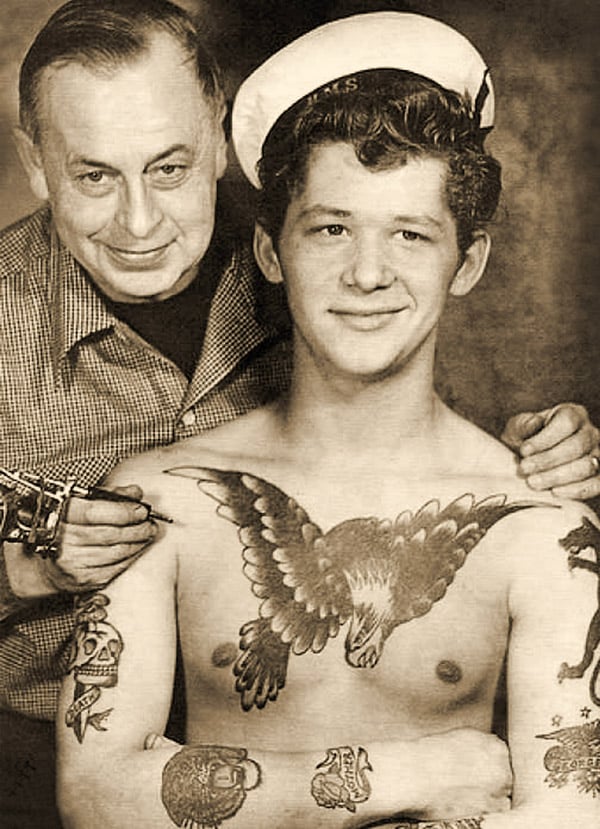
The Tattoo Artist Doc Forbes and his client, Vancouver, Canada, c.1949 (Sepia Photo), Canadian Photographer, (20th century) / Private Collection / Prismatic Pictures / Bridgeman Images
This image is uncomfortable in a colonial sort of way. It shows American photographer Alfred Eisenstaedt taking to the streets of Tokyo to make unsuspecting locals drop their pants and face the wall in order to take pictures of their butts. The kids are more interested in the camera, obviously.

Photographer documenting a man’s tattoos, Tokyo, Japan. c.1880 (b/w photo), Japanese School, (19th century) / Private Collection / Prismatic Pictures / Bridgeman Images
Images & Licensing
All tattoo images in the blog post are from the Bridgeman archive
Contact the team at Bridgeman Images with queries regarding licensing and clearing copyright



